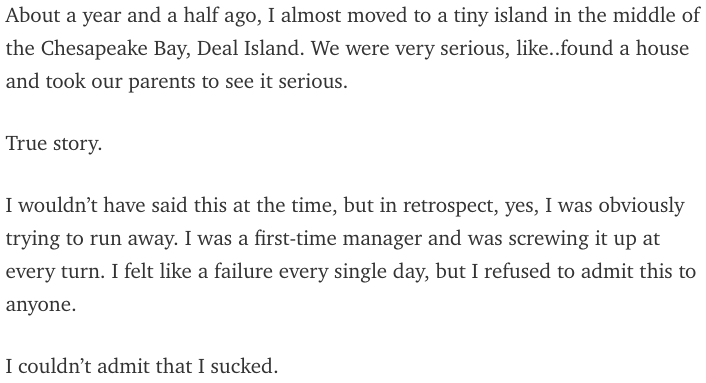Don't you hate it when you've got your entire post written – except for the tedious introduction?
Or maybe you've got an idea but have no clue where to start.
I mean, can't you just get straight to the meat of your post? Why is the introduction supposedly so important? Is it even necessary?
Turns out, it is.
The reason is, an introduction confirms to the reader that they are in the right place and encourages them to keep reading. It prepares them for what they are about to digest. And it also lets them know why it's important and valuable to them.
And by the way, the introduction doesn't have to be lengthy.
On that note, just in case you need some inspiration, here are three intro paragraphs that grabbed my attention:
1) “Confessions of a Google Spammer,” by Jeff Deutsch
There are a few reasons why we love this introduction. Immediately, it grabs our attention — how the heck did this guy make fifty grand every month? And just from 10 hours a week?
But unlike some spammy comments that might contain a similar sentiment, he almost immediately serves us something unexpected — he tells us not to do that.
Then, he states the true purpose of the blog — to explain why we should “never, never ever follow in [his] footsteps.” In just three sentences, this introduction has captivated us and validated the story's existence with a looming life lesson. The takeaway? Keep it short, but powerful.
2) “Taste the Season at Sushi Sora,” by Chris Dwyer
Strong introductions aren't just important for blogs — they're essentially to quality editorial pieces, too. That's why we love this introduction to an article from Destination MO, the Mandarin Oriental's official online magazine.
Remember that thing we said about a captivating start? In addition to being empathetic or funny, visuals can be huge — not just an actual picture or video, but words that actually help the reader envision what you're describing. This introduction does just that, with expressive phrases like, “the magical silhouette of Mount Fuji on the horizon.” Well, yeah. That does sound magical. But where can I go for such a view? None other than the “Mandarin Oriental, Tokyo,” the author tells me, especially “from the sushi counter at Sushi Sora.”
Here's the thing about this intro — it gives the reader something to aspire to. We've briefly discussed aspirational marketing before, but this instance is one where it can be used in a brief introduction. After reading this first paragraph, I want to go to Tokyo. And when I'm there, I want to stay at the Mandarin Oriental. Then, I want to take in the views from its high-end sushi restaurant.
With just two sentences, I've gone from reading an article with my morning coffee, to fantasizing about a thousand-dollar vacation. So whenever possible, use your introduction to paint a picture, and to help your reader dream.
3) “The Secret Club of Admitting You Suck,” by Janessa Lantz
Let's read through this introduction from ReadThink together.
I know. I know! I once moved very far away to escape my own failure, too! But I couldn't admit at the time that I sucked, either! Wow. Janessa Lantz really gets me.
See that? That, right there, is a resounding example of how empathy makes a profound introduction. But how did the story end? Did they buy the house? Did she admit that she sucked? Does she still suck? (Spoiler alert: I work with Janessa and can say, with great confidence, that she is far from sucking.)
The point is, I wanted to keep reading for two reasons — first, I related to the author. Second, it was just plain interesting, and it left me with a cliffhanger. It's okay to tease your readers. Just make sure you ultimately give them what they're seeking.
Source: HubSpot
CHALLENGE Yourself to Profit!
Free Download: Build Your Profit-Generating Online Business With This Free Blueprint
Sign Up, follow the easy steps and You'll get the tactics, strategies & techniques needed to create your online profit stream. It's free!
[adrotate group=”6″]
[adrotate group=”5″]




